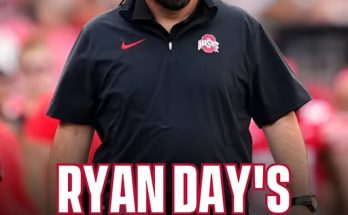Auburn’s baseball program wasted no time in the wake of their Super Regional elimination, swiftly adding five impact transfers to reload for the 2026 season, a decisive move that emphatically signals their intent to remain a perennial contender in the demanding landscape of college baseball. The sting of their postseason exit, a hard-fought battle against Coastal Carolina, was still fresh, but Head Coach Butch Thompson and his staff immediately pivoted to the NCAA Transfer Portal, demonstrating a proactive and aggressive approach to roster management. This rapid infusion of talent is a testament to the program’s vision, resilience, and commitment to building on the successes of the past season. The loss to Coastal Carolina, a sweep in two competitive games (7-6 in 10 innings in Game 1 and 4-1 in Game 2), ended a historic season for the Tigers, who hosted a Super Regional for the first time ever and finished with a commendable 41-20 record. Despite the disappointment of falling short of Omaha, the swift action in the transfer market has turned the page quickly, focusing the narrative on a promising future.
The five new additions represent a blend of pitching depth and offensive prowess, carefully selected to address key areas of need following the departure of several players due to eligibility. The strategy appears to be a targeted approach, aiming for instant impact and bolstering the existing core. Butch Thompson articulated the challenge and necessity of this quick turnaround, noting that navigating the postseason while simultaneously engaging with the transfer portal is “probably been the most unique few days of my journey in coaching.” Yet, Auburn’s ability to secure these commitments so rapidly, with the transfer portal only officially opening just before their Super Regional, speaks volumes about the groundwork laid by the coaching staff. They were effectively recruiting for the future while still competing in the present, a demanding feat that paid immediate dividends.
Leading the charge among the incoming pitching talent are two promising starters: Jake Marciano, a left-handed pitcher from Virginia Tech, and Drew Whalen, a right-hander from Western Kentucky. Marciano, a rising sophomore, is touted as a high-upside arm, ranked as the No. 14 best available transfer by 64Analytics, indicating his elite potential. As a freshman at Virginia Tech, he recorded a 4-2 record with a 6.08 ERA and 71 strikeouts across 14 starts. While his ERA might suggest some room for improvement, his strikeout numbers and his ranking indicate that Auburn sees significant raw talent and a high ceiling. He is expected to compete for a spot in the Tigers’ starting rotation, bringing a valuable left-handed presence to the mound. His exposure to a Power Four conference like the ACC also suggests he’s already accustomed to facing high-level competition, which should ease his transition to the SEC. His ability to develop consistency will be key to his impact.
Drew Whalen, a sophomore right-handed pitcher from Western Kentucky, arrives with an impressive resume. He was named Conference USA Pitcher of the Year as a sophomore, posting a stellar 9-3 record with a 3.53 ERA and 90 strikeouts in 81.2 innings pitched across 16 starts. Whalen brings proven success and a track record of durability, having delivered strong performances over two seasons. His lower ERA and higher strikeout-to-walk ratio (31 walks in 81.2 innings) suggest a more polished and consistent arm immediately ready to contribute. He is ranked as the No. 50 transfer by 64Analytics, a highly respectable ranking that indicates his value as a reliable, mid-rotation starter. The addition of both Marciano and Whalen provides much-needed depth and talent to a pitching staff that will lose several key arms due to eligibility. Developing and refining these arms will be crucial for Auburn’s future success, especially in the pitching-heavy SEC.
Rounding out the pitching additions is Garrett Brewer, a left-handed reliever from Michigan State. Brewer brings a different but equally vital component to the bullpen. Last season, he finished with a 2-2 record across 17 relief appearances, striking out 41 batters and walking 13 in 34.1 innings of work, with a 4.46 ERA. His role will be to solidify the late innings, providing a crucial left-handed option out of the bullpen that can handle high-leverage situations. In the modern college baseball landscape, a deep and effective bullpen is just as important as a strong starting rotation, and Brewer’s addition directly addresses that need. His ability to limit walks and generate strikeouts will be essential in closing out tight games.
On the offensive side, Auburn secured two significant infielders. Todd Clay, an infielder from UAB, is a local product who returns to his hometown team, having played high school baseball at Auburn High School. This homecoming aspect adds a compelling narrative to his transfer. After one season at UAB, Clay led the Blazers with 69 hits and a .539 slugging percentage, earning him a spot on the All-American Athletic Conference Second Team. His impressive offensive production, including a .361 batting average and a .473 on-base percentage, suggests he could be an immediate impact bat in the middle of Auburn’s lineup. He has experience at second base, offering defensive versatility. Notably, Clay did some damage against his future team this past season, recording four hits, five RBIs, and a home run against Auburn in two UAB victories, proving he can perform against tough competition. His return to Auburn is not just a feel-good story; it’s a strategic pickup of a proven hitter.
The final offensive addition is Ryne Farber, a shortstop from Texas State. Farber is a switch-hitter who recorded a .267 batting average, four home runs, 33 RBIs, and 17 stolen bases as a sophomore. He also hit an impressive .340 as a freshman, indicating strong potential for a bounce-back season. With current shortstop Deric Fabian set to graduate, Farber is a strong candidate to step into an instant starting role. His switch-hitting ability adds valuable flexibility to the lineup, and his speed and stolen base prowess bring another dimension to Auburn’s offensive attack, making them more dangerous on the basepaths. Farber’s defensive skills at shortstop, a premium position, will also be crucial for solidifying the infield.
The strategic importance of these five transfers cannot be overstated. Auburn is guaranteed to lose nine players due to eligibility this offseason, making the immediate replenishment of talent a top priority. The swiftness with which Coach Thompson and his staff moved in the portal, securing commitments from five players within days of their season ending, highlights a well-executed plan. This proactive approach ensures that the roster does not experience a significant drop-off in talent or depth, allowing the program to maintain its competitive edge in the SEC. The fact that Auburn’s transfer portal class is currently ranked as the No. 4 in the country by 64Analytics, trailing only other baseball powerhouses like Georgia and South Carolina, further underscores the quality and impact of these additions.
Beyond the raw statistics and rankings, these transfers bring experience and maturity to a roster that will undoubtedly feature a mix of seasoned veterans and promising young talent. College baseball, much like college football, is increasingly influenced by the transfer portal, allowing programs to quickly address deficiencies and inject proven commodities. Auburn’s coaching staff, despite the emotional toll of a deep postseason run and elimination, demonstrated an impressive ability to pivot and focus on the future. Their success in attracting these five players suggests that Auburn’s program, its facilities, and its coaching philosophy are highly appealing to players seeking a new opportunity to compete at the highest level.
The 2025 season, despite its heartbreaking conclusion in the Super Regional, was a significant success for Auburn baseball, highlighted by hosting a Super Regional for the first time in program history and a strong performance in SEC play. The quick reload in the transfer portal is a clear signal that the program views this past season not as a peak, but as a stepping stone. The aim is not just to compete, but to contend for national championships, and the caliber of these five transfers reflects that ambition. With the transfer portal remaining open until July 1, there could still be further additions or subtractions, but the initial haul has laid a strong foundation for the 2026 season and beyond, ensuring that Auburn remains a formidable force in college baseball. The resilience and foresight demonstrated by the coaching staff in this immediate aftermath of elimination paint a very bright picture for the Tigers’ future on the diamond.



